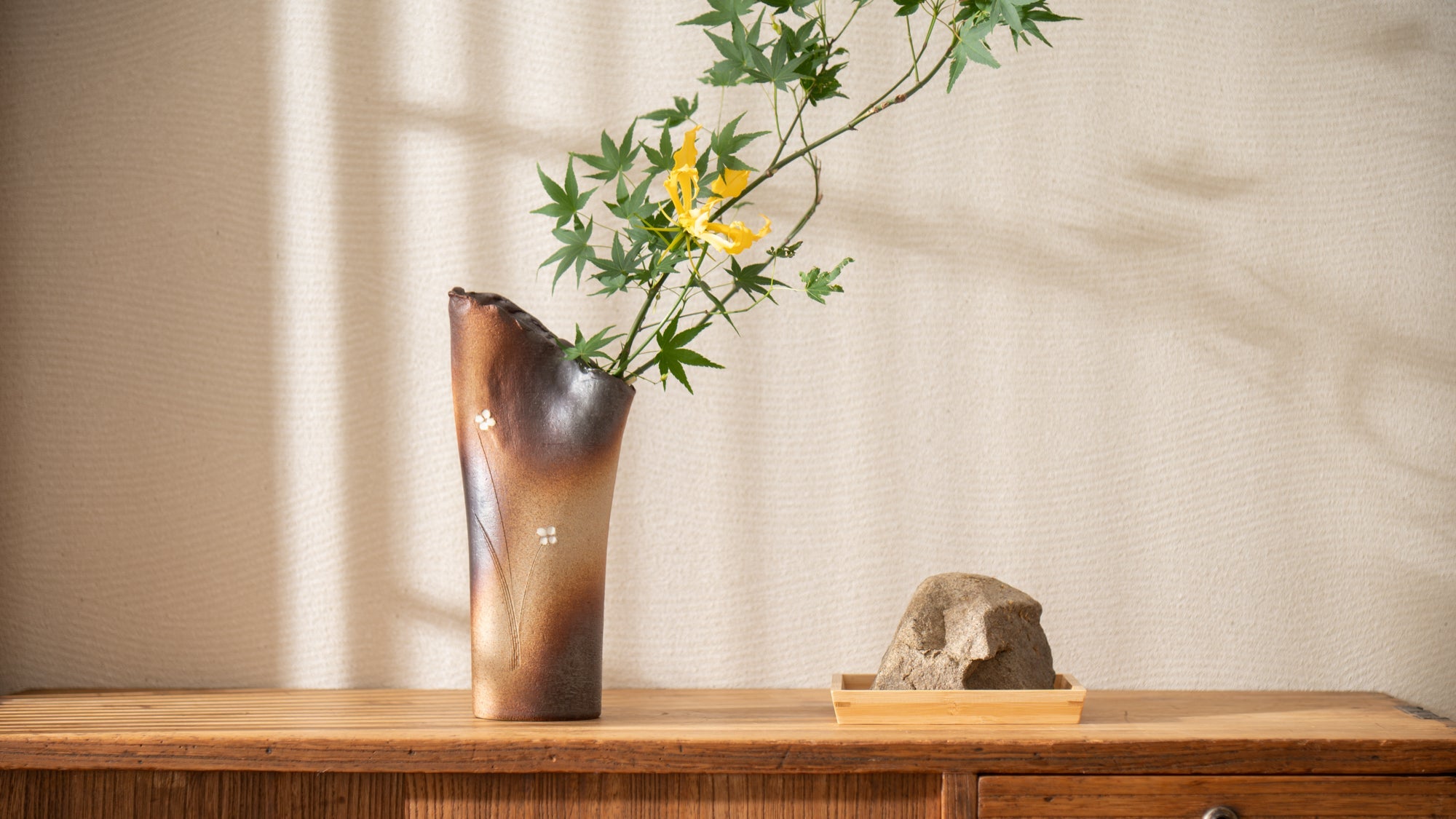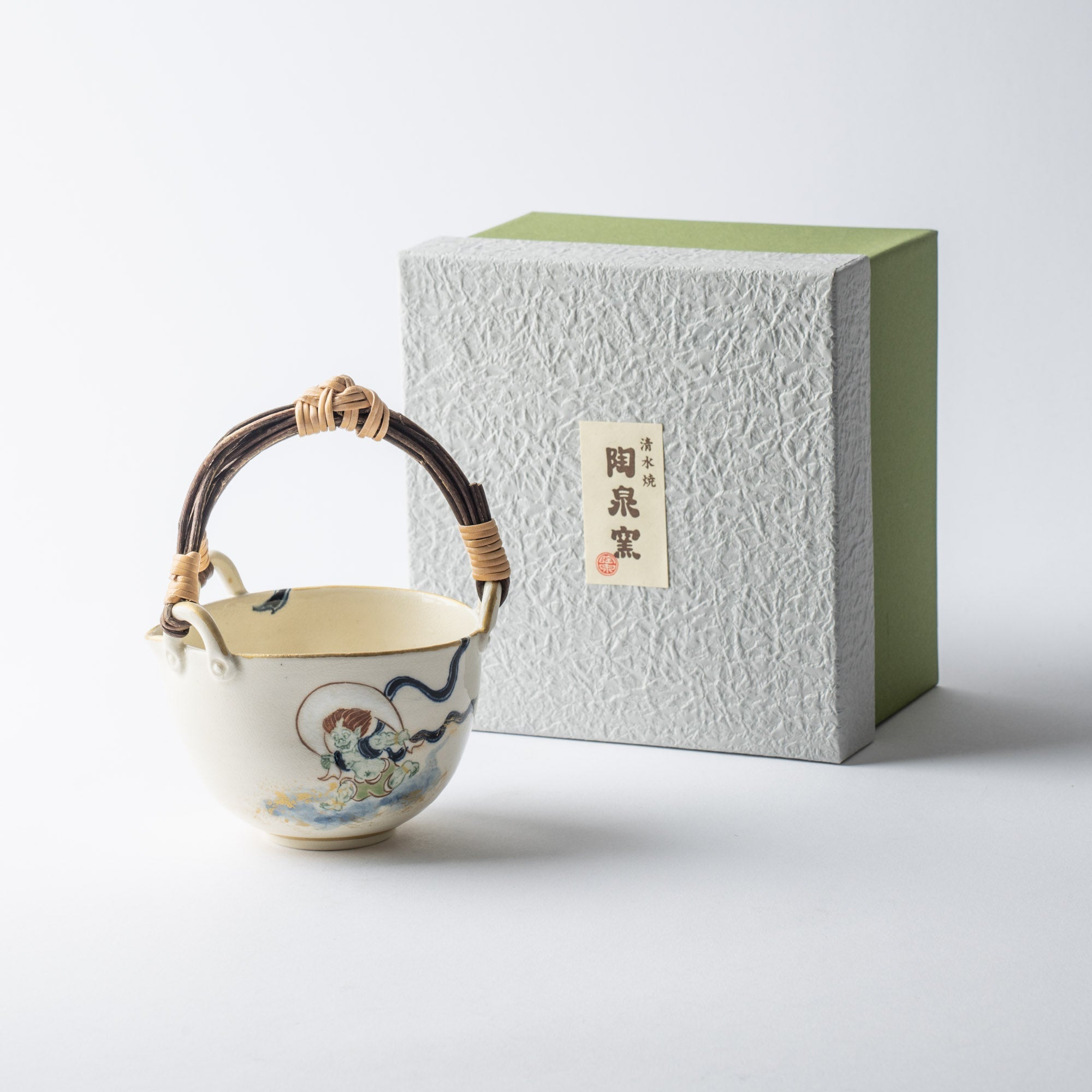
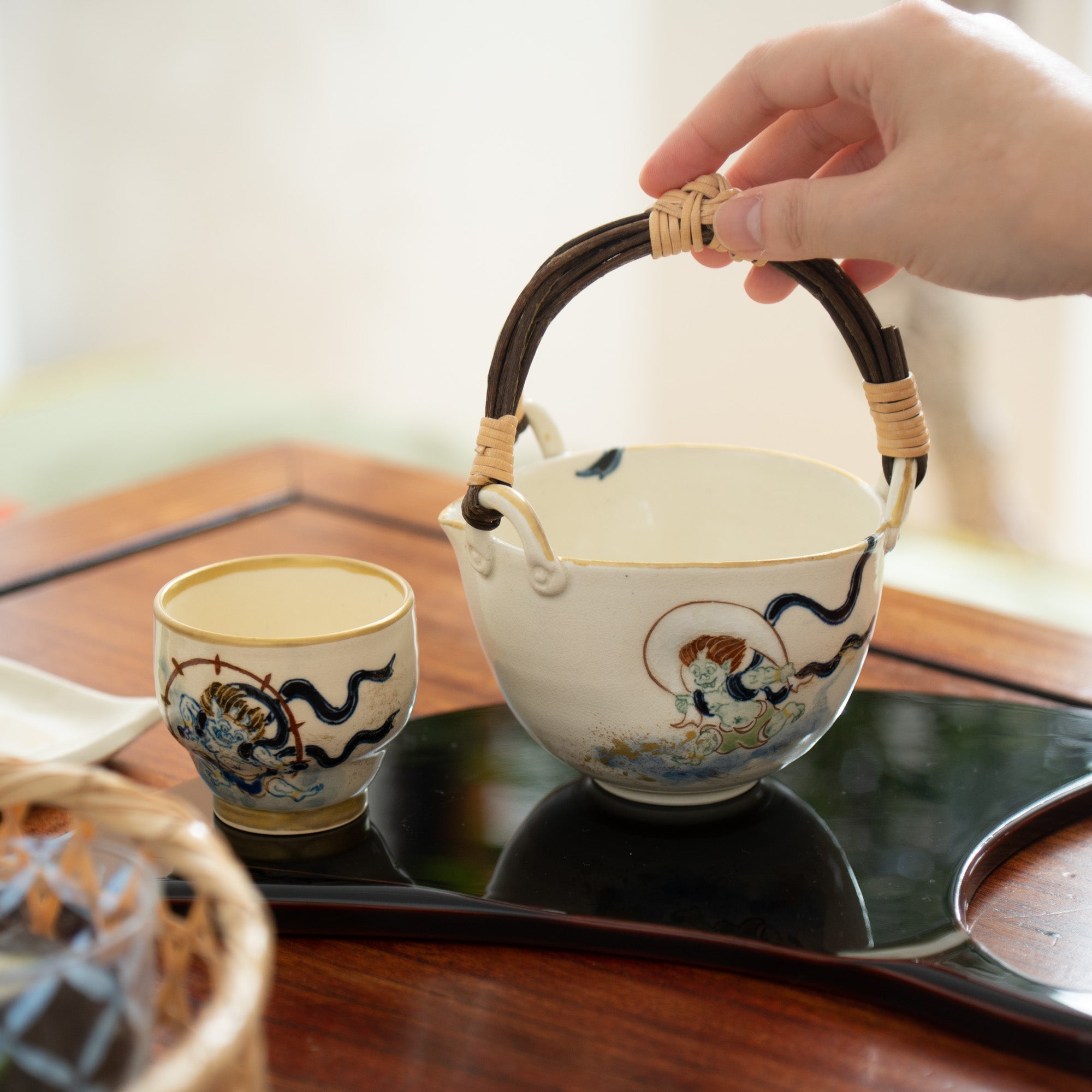
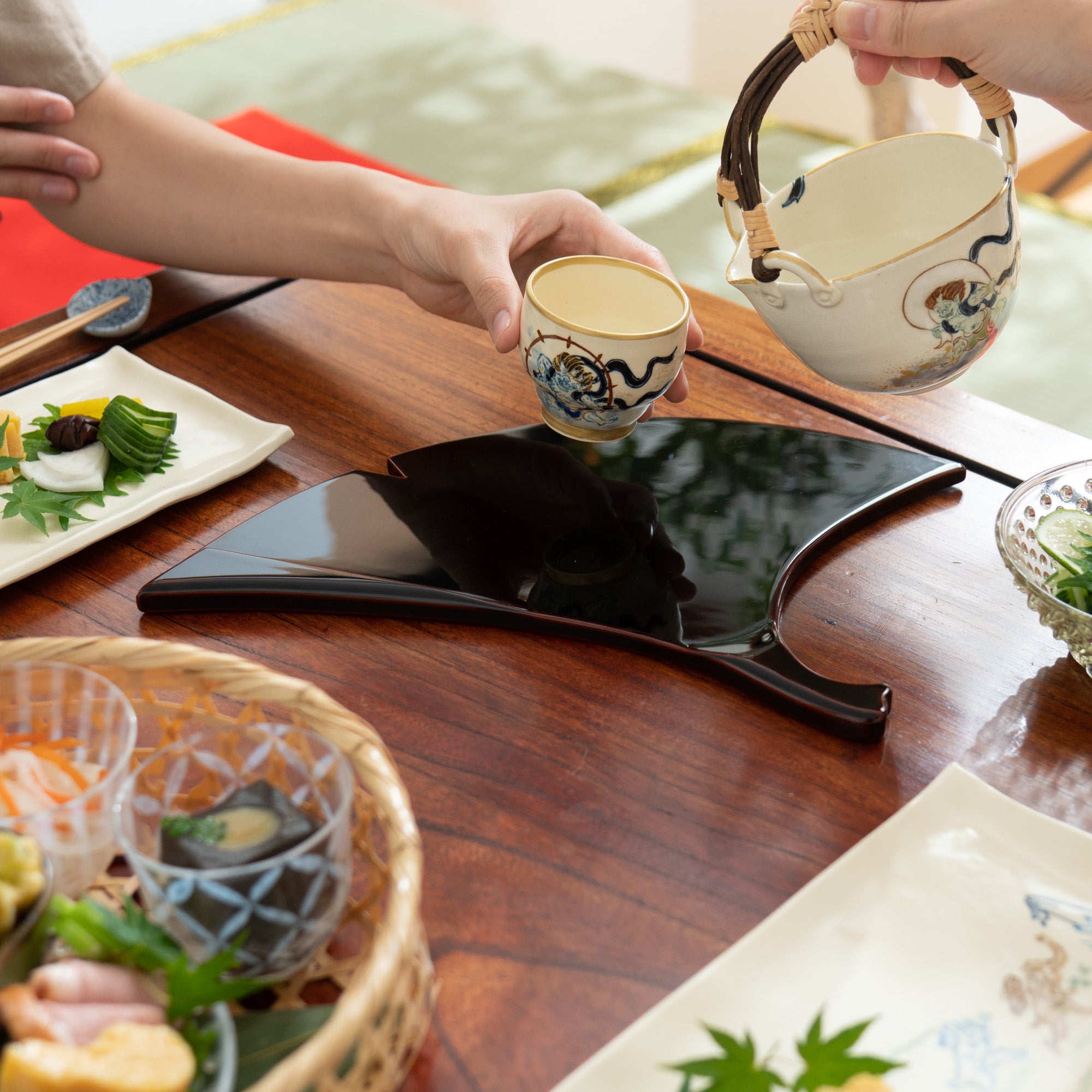
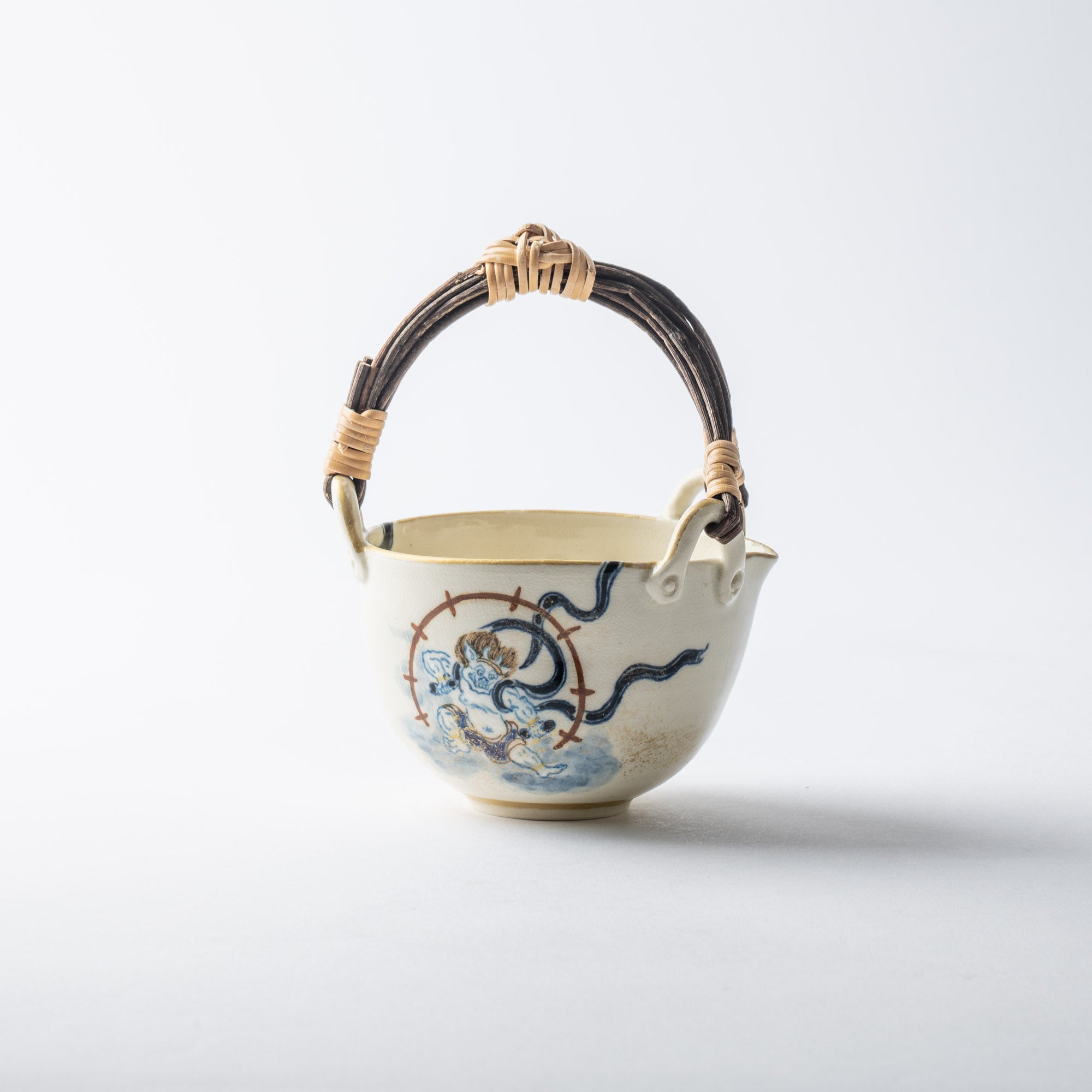
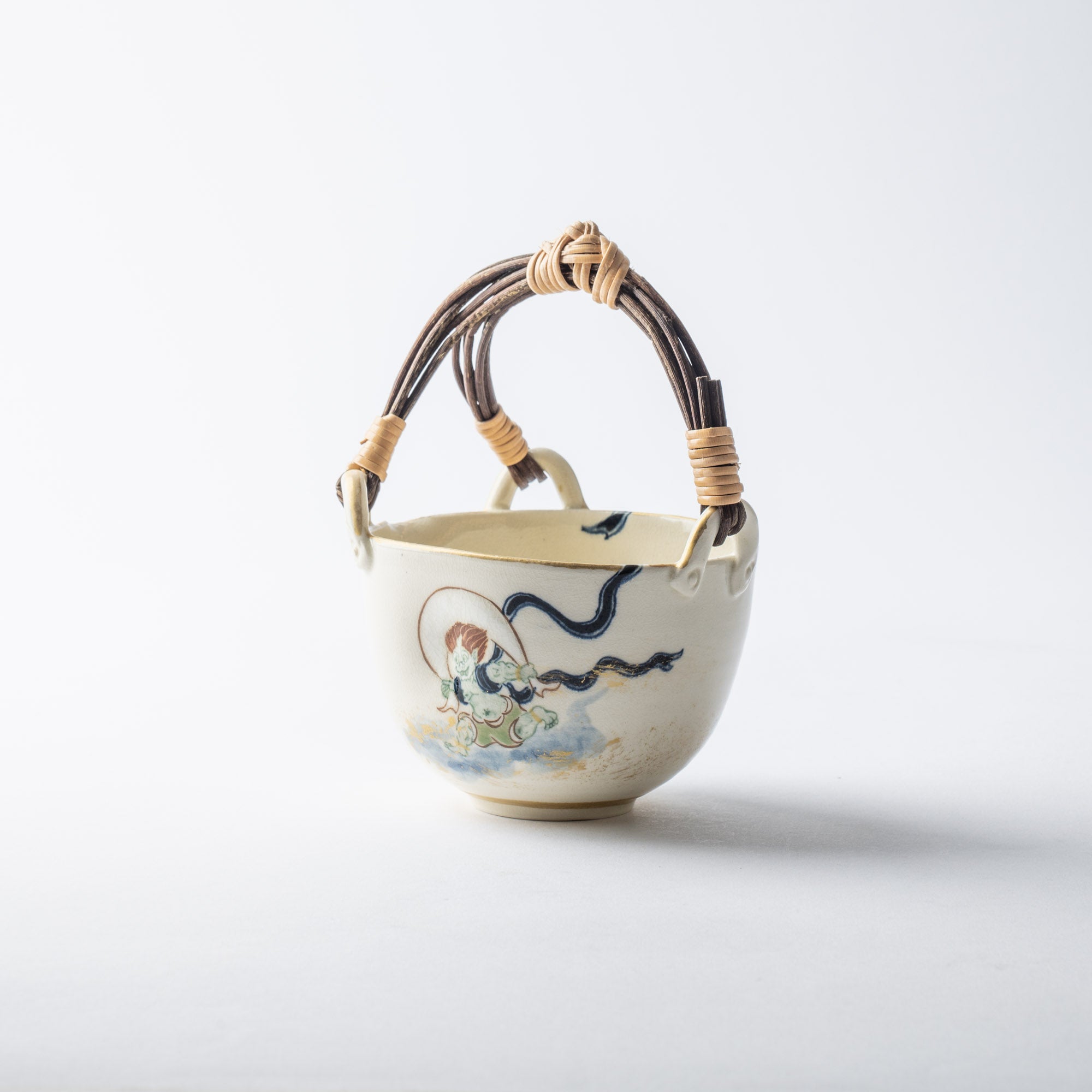
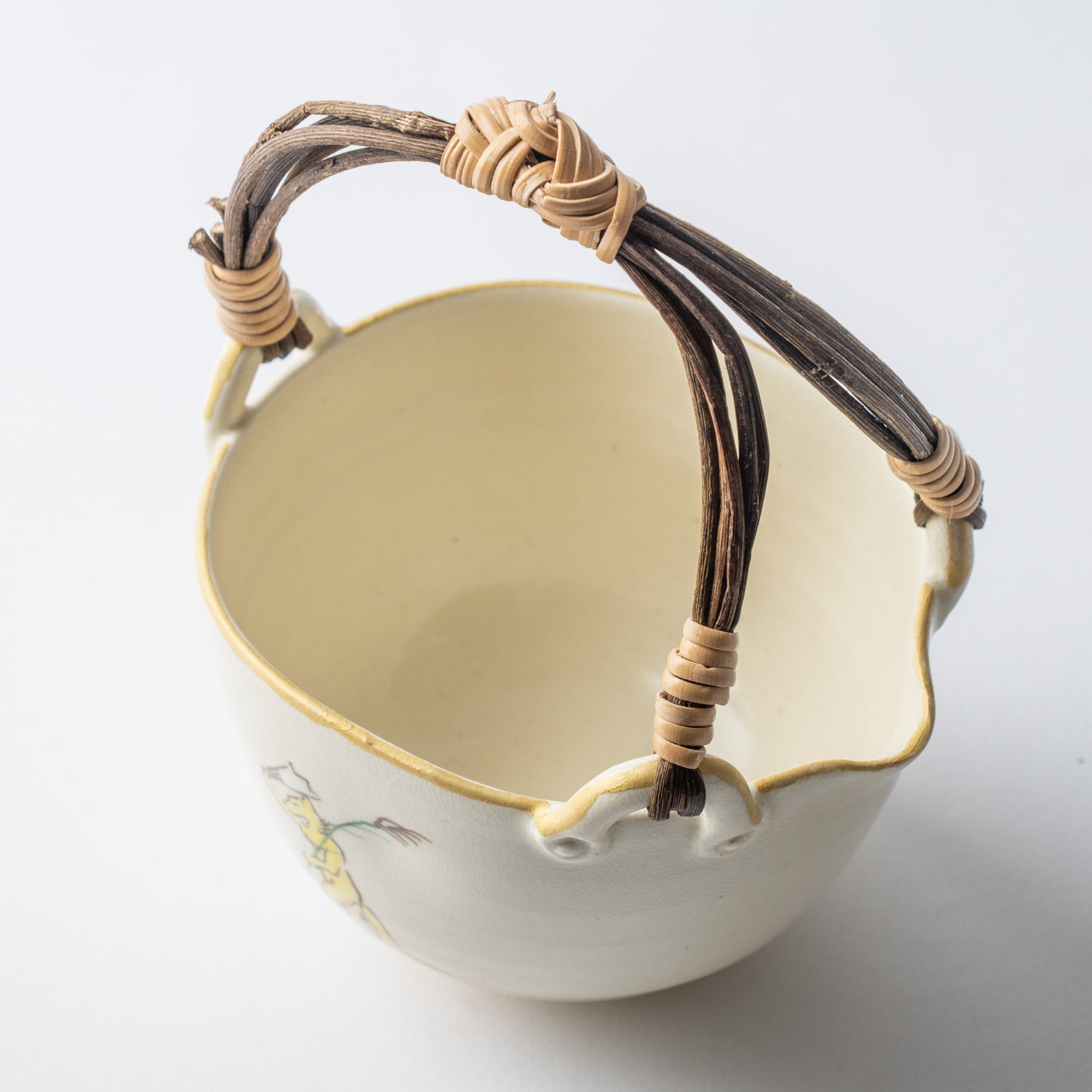
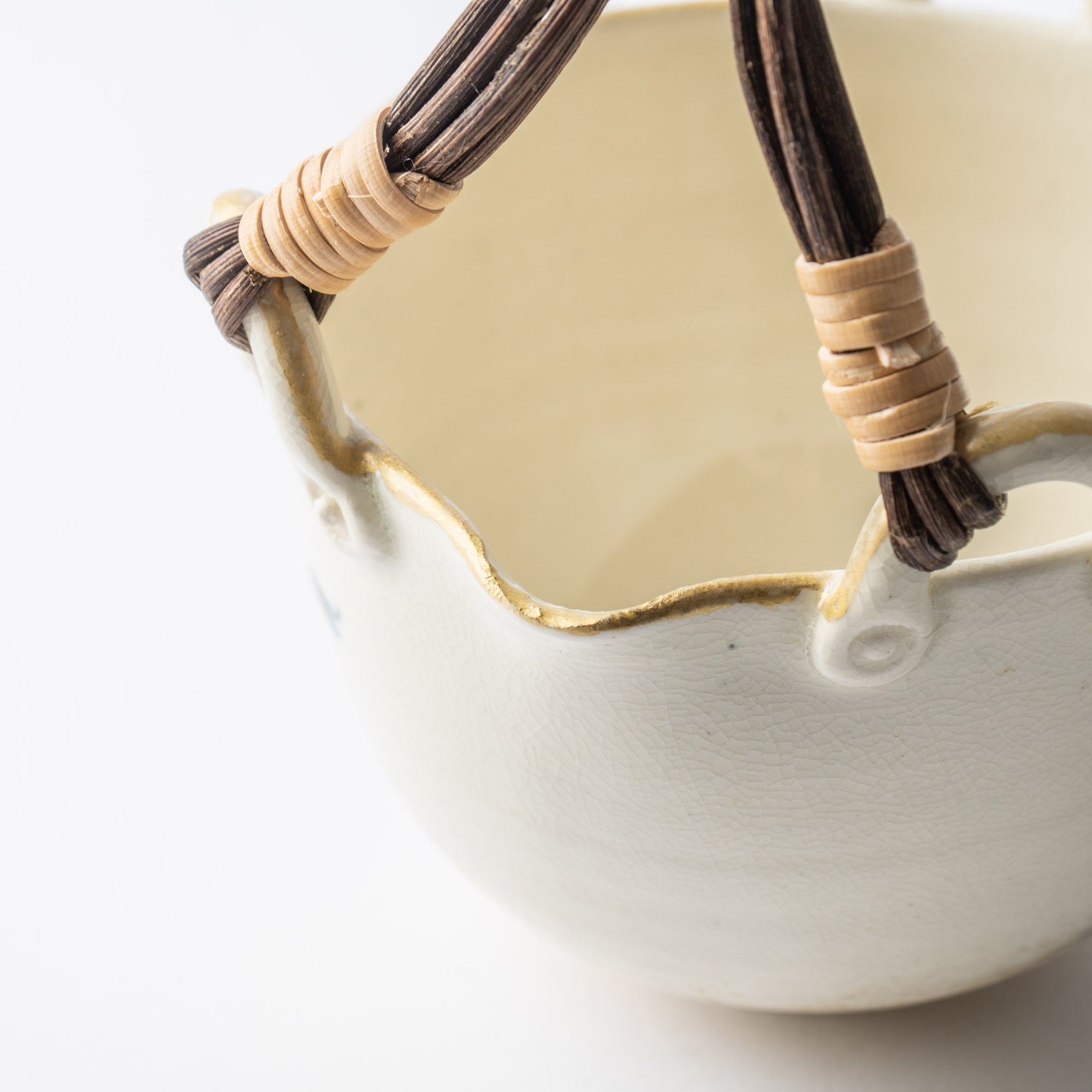
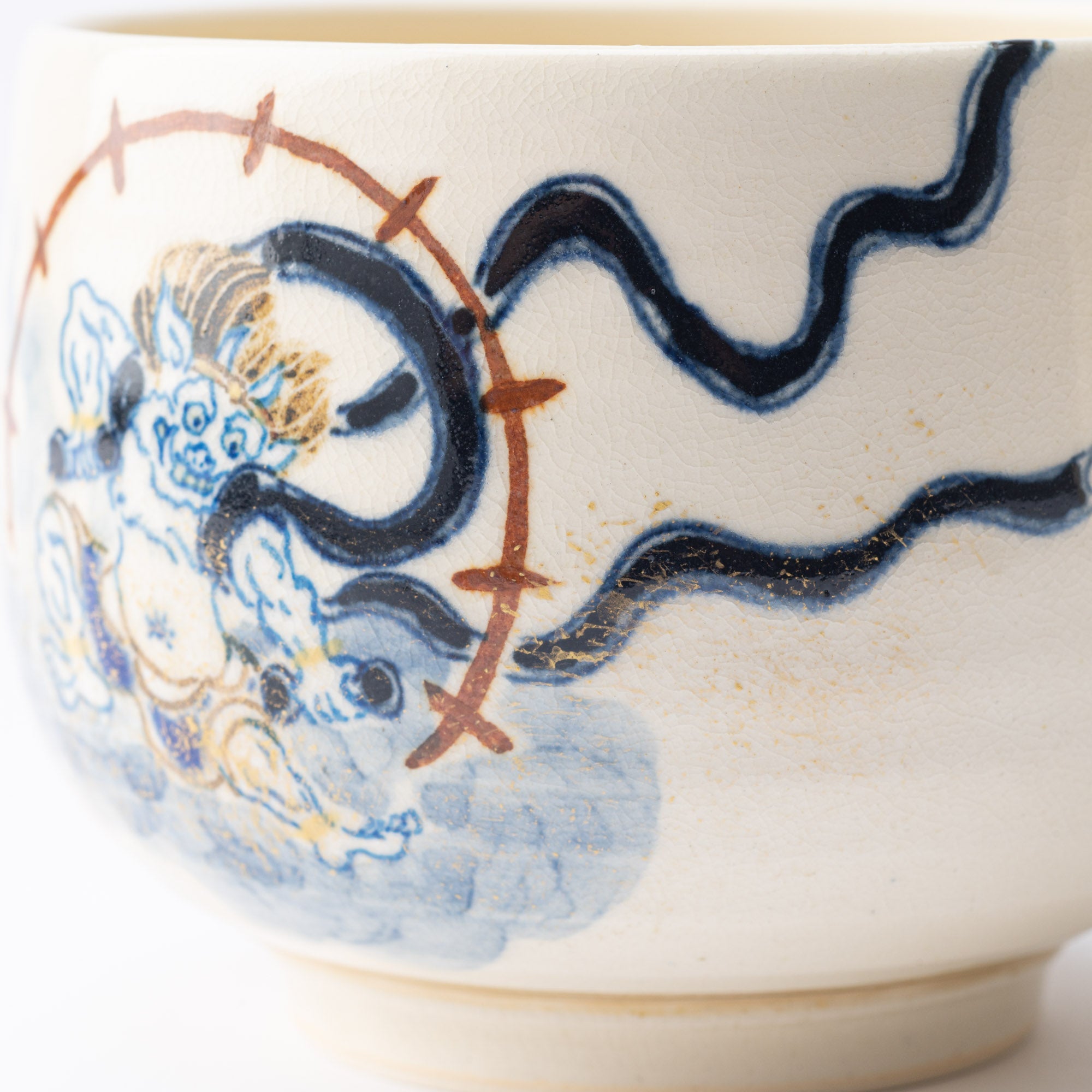
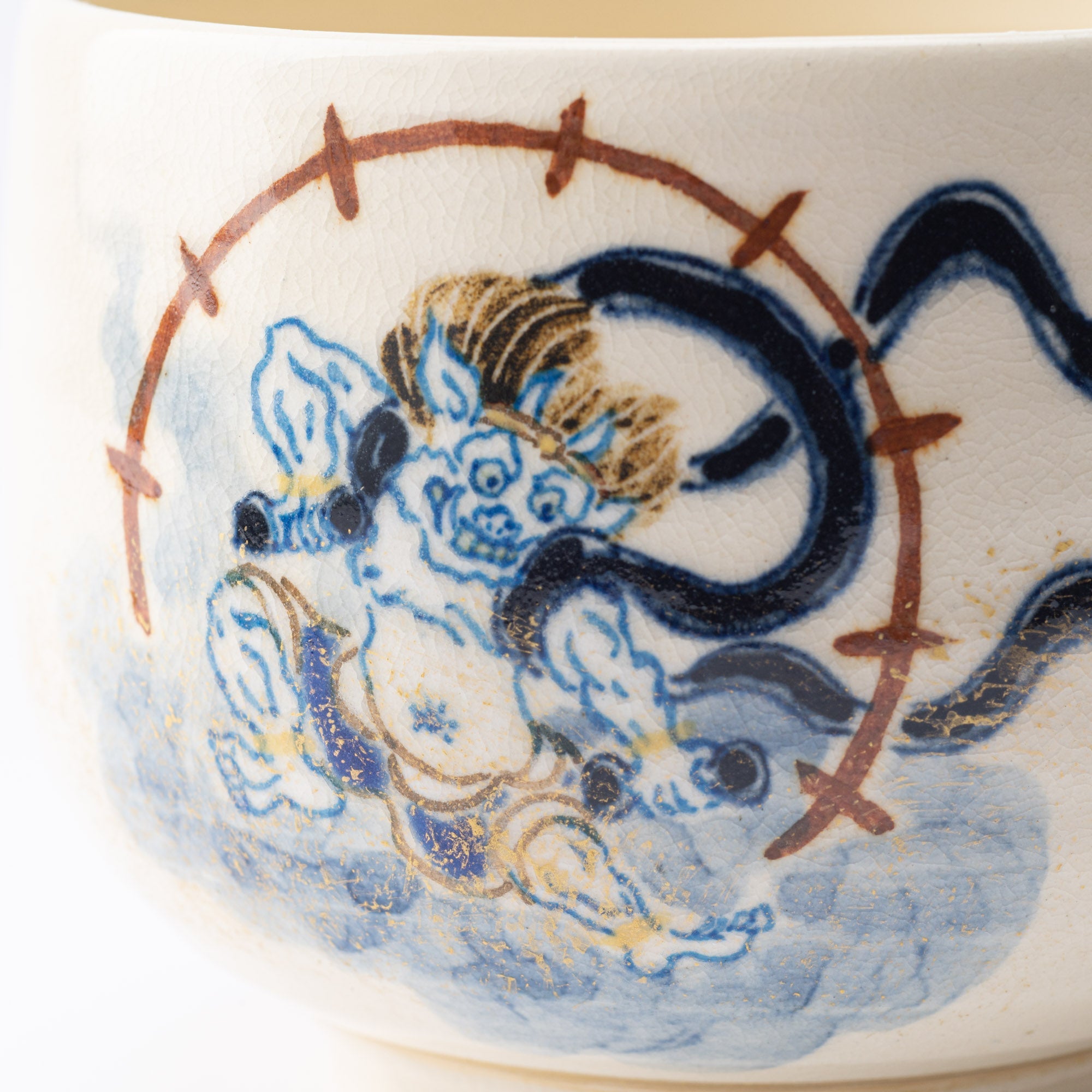

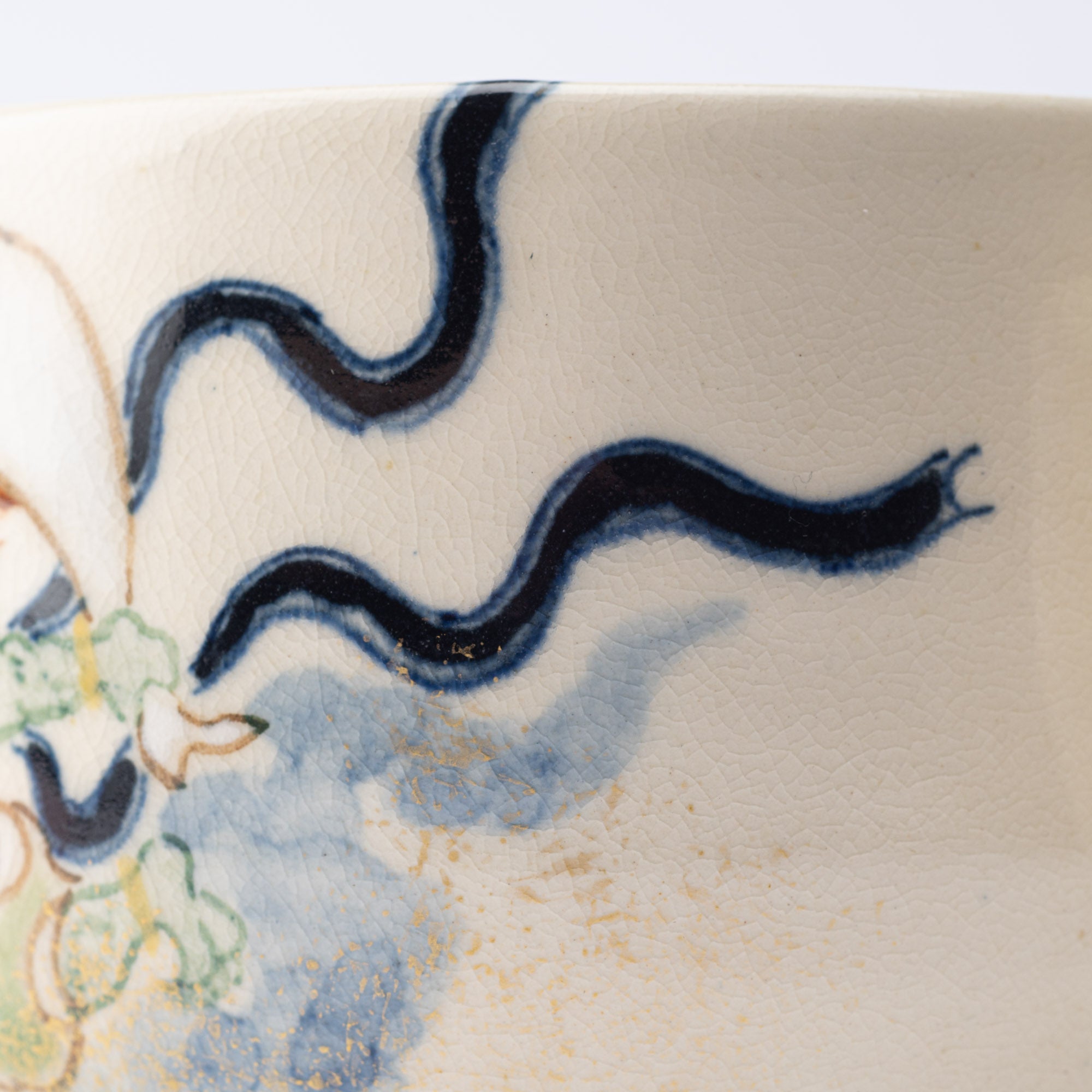
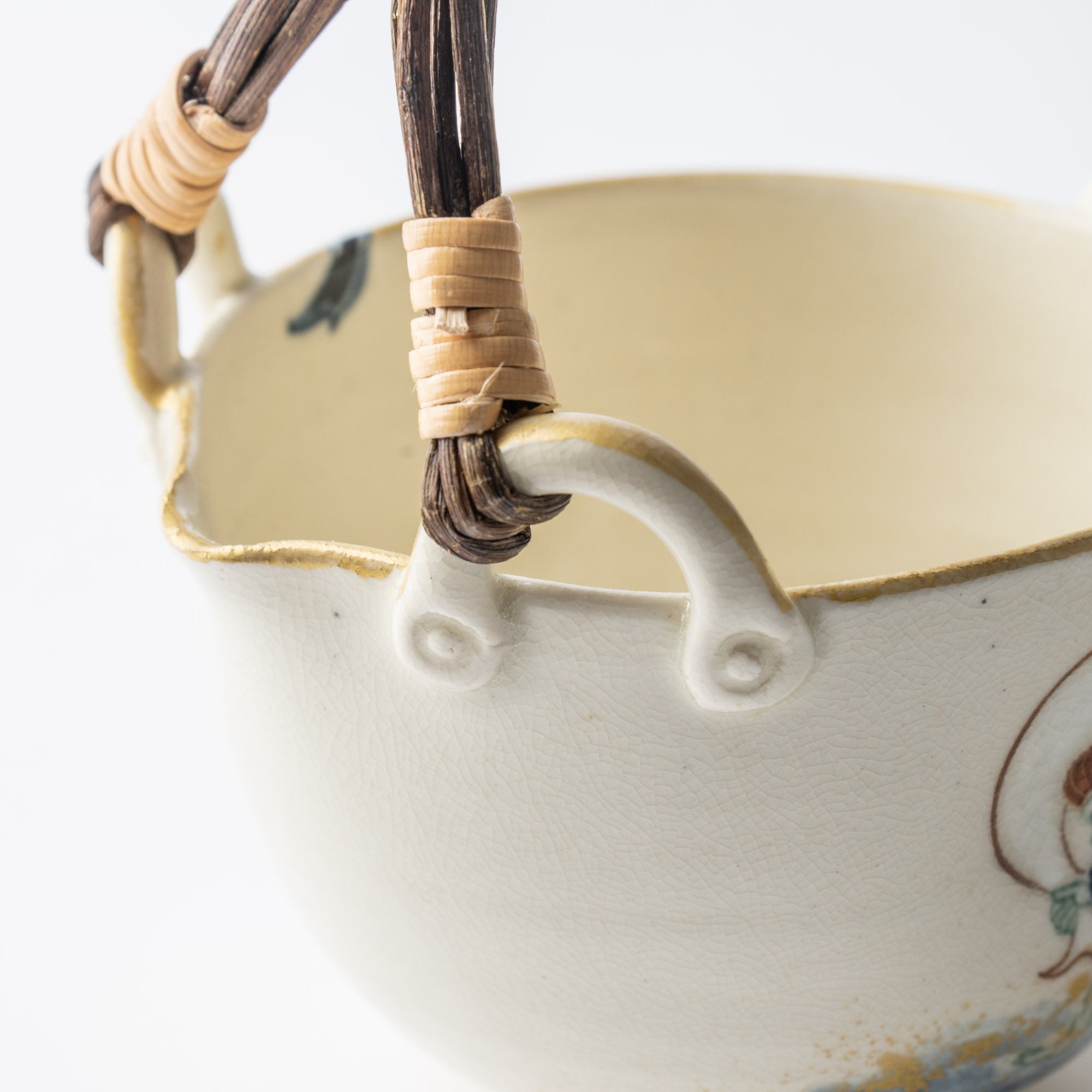
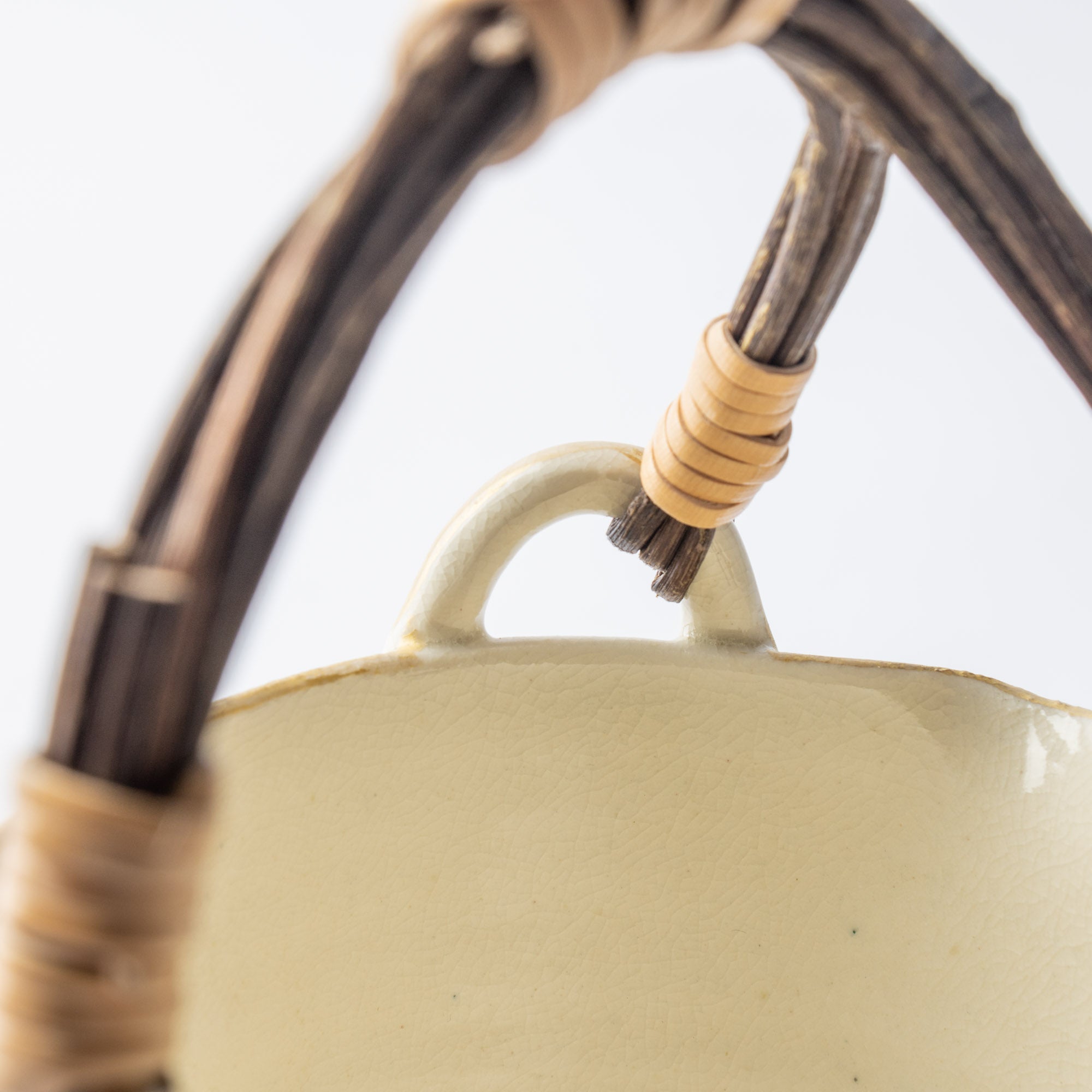
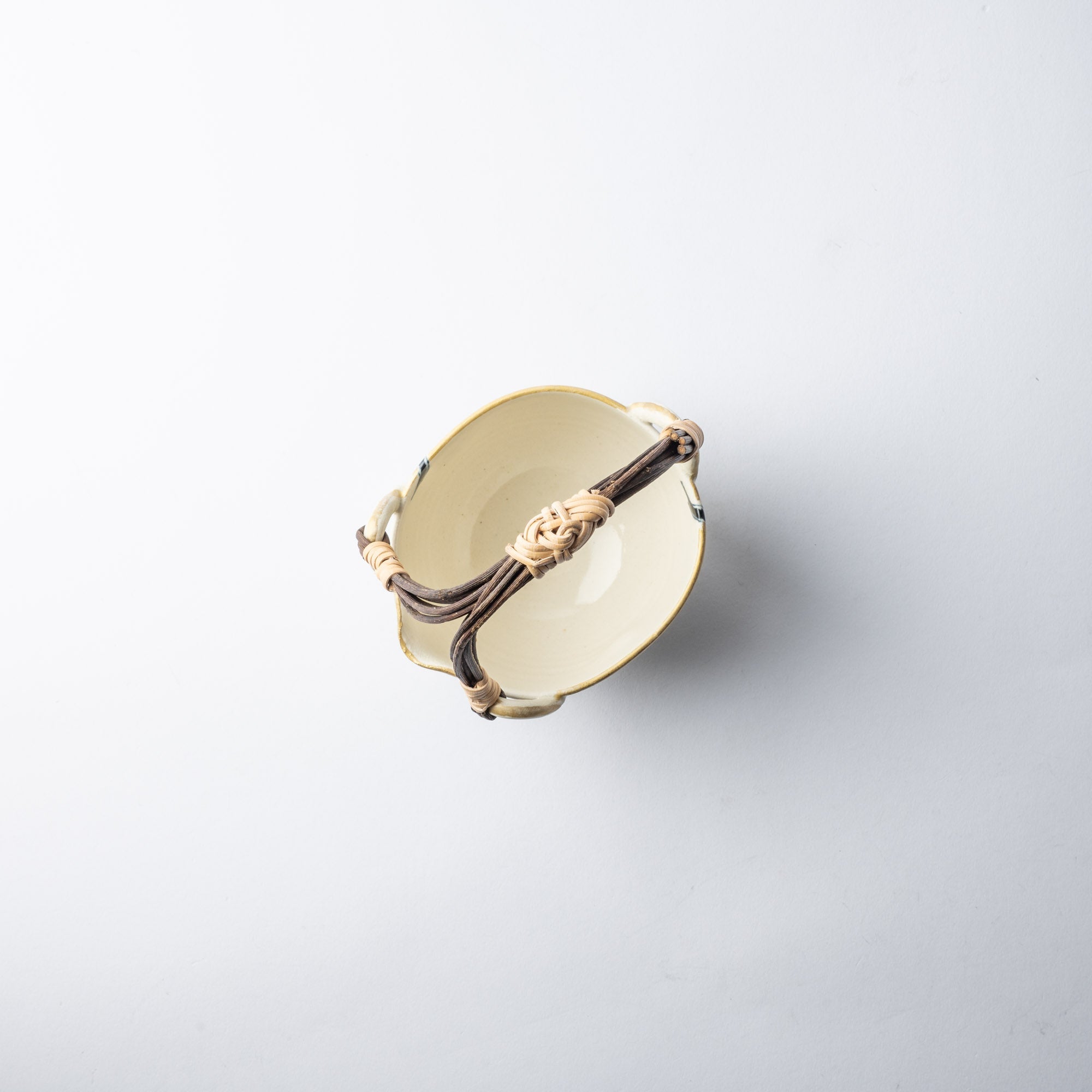
Fujin Raijin Katakuchi Sake Carafe
Estimated Shipping Widget will be displayed here!
Featuring the distinctive nami-yu glaze, which is made from the ashes of the Kyoto forest, this katakuchi sake carafe has a natural base color of yellowish cream-white.
The paintwork is done by individual Japanese-style painters, pursuing their own originality and depth beyond the expectations of mere decorations. This particular piece depicts the deities Fujin and Raijin (the wind god and thunder god). Not only are they deities of the supernatural, but they are also believed to be the attendants of the wise Buddha. The Fujin is riding his cloud, carrying a cloth that lets him control the wind at his own will, and the Raijin holds a ring of drums.
The handle is made from a branch, giving a contrast between the smooth stoneware and the rustic texture of wood. Holding the carafe, we see the paintings of the two gods. The carafe is very light and easy to pour sake. The lower part of the carafe is faintly brushed with gold to portray mist or fog.
The finishing touches are the gold linings on the rim and bottom, along with scattered sprinkles on the side. Due to its delicate characteristics, gold can only be applied as an overglaze to truly display its beautiful color. You can enjoy the company of a miniature wind god, entertaining your drinking experience.
DES DÉTAILS
| Quantity | 1 |
| Size |
D 13 cm (9.8 in) x H 7.5 cm (2.9 in) [With handle] H 17 cm (6.7 in) |
| Capacity | 300 ml (9.5 fl oz) |
| Material | Stoneware |
| Package Type | Paper box |
| Microwave | No |
| Dishwasher | No |
Fabricant / Marque
Fondé en 1868, le four Tosen était un grossiste en céramique Kiyomizu. En 1944, il a ouvert un atelier de production à Mukomachi, en banlieue de Kyoto, marquant ainsi le début de la production à grande échelle de céramique Kiyomizu. Aujourd'hui, le four est en activité à Gojo, à Kyoto, perpétuant ainsi son savoir-faire artisanal.
Dédié au perfectionnement de ses techniques et de sa sensibilité artistique, Tosen Kiln s'inspire de l'artisanat traditionnel de Kyoto tout en l'adaptant à l'ère moderne. S'inspirant du maître potier Nonomura Ninsei de l'époque Edo, il préserve ses techniques de tournage précises et ses styles de peinture lumineuse, les mêlant à des lignes épurées et des tons chauds pour créer des pièces en résonance avec l'esthétique contemporaine.
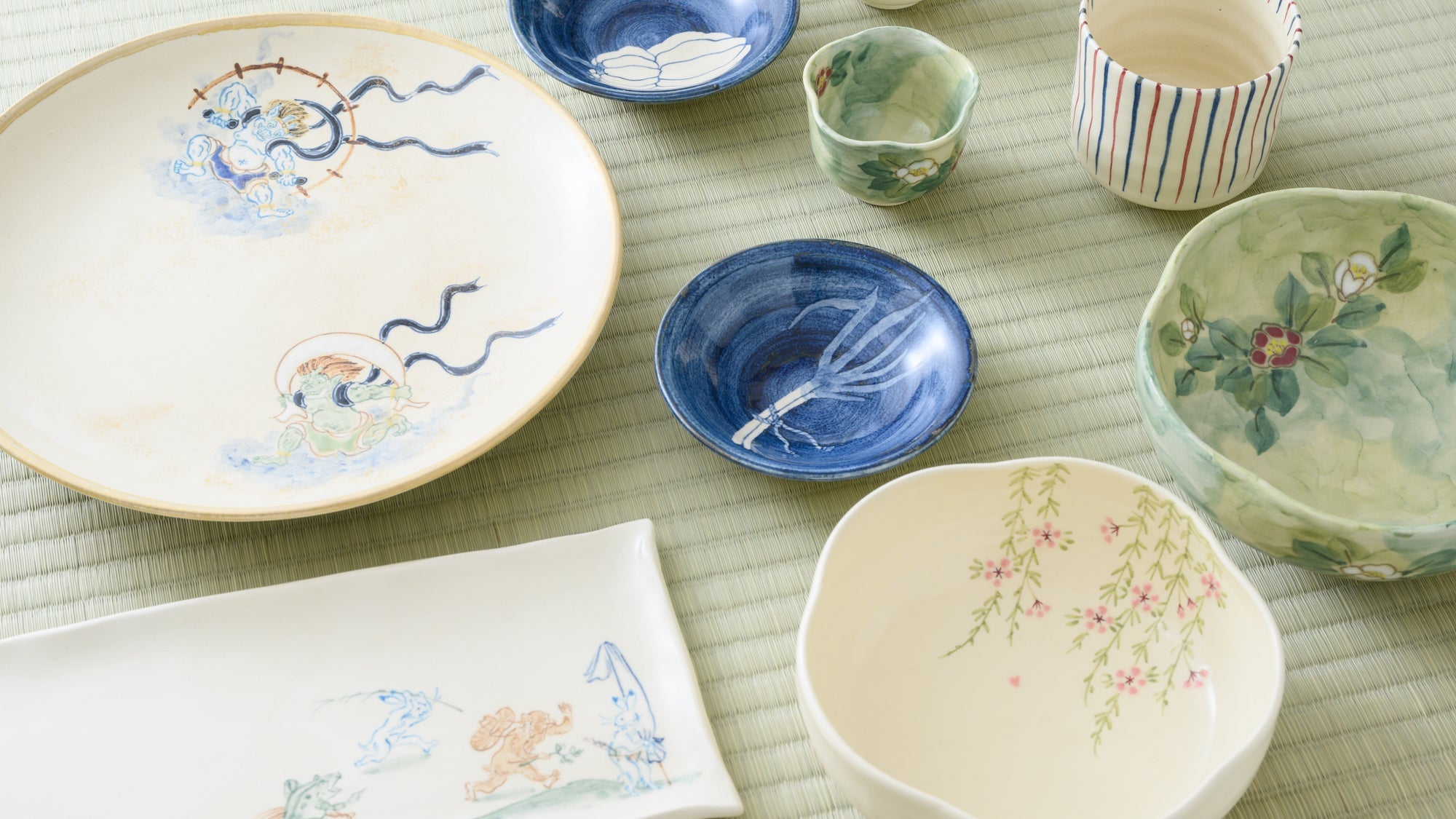
Artisanat
Les céramiques Kyo et Kiyomizu, collectivement appelées Kyo-yaki et Kiyomizu-yaki, sont des styles de poterie célèbres de Kyoto. Réputées pour leurs motifs vibrants, leurs formes finement sculptées et leur souci du détail artisanal, ces céramiques reflètent le sens de la beauté et le raffinement artistique propres à Kyoto.
Caractérisées par une diversité cultivée de longue date, les céramiques Kyo et Kiyomizu s'inspirent des techniques et des styles des traditions potières du Japon, évoluant vers une forme d'art riche et expressive, typiquement kyotoïte. Reconnues comme artisanat traditionnel du Japon en 1977, elles continuent d'être appréciées pour leur profondeur culturelle et leur attrait quotidien.

Choisir les options














Estimated Shipping Widget will be displayed here!
Sake Carafes
Nous avons rassemblé de magnifiques carafes à saké (bouteilles de saké) provenant de tout le Japon, qui sublimeront vos moments de bonheur en savourant votre saké préféré. Notre collection comprend une variété de styles traditionnels, tels que tokkuri, katakuchi, et chirori, chacun avec son propre charme et sa propre fonction unique.
La taille standard d'une carafe à saké est de 180 à 360 ml (6 à 12 oz liq. ) . Pour ceux qui préfèrent boire en grande quantité ou qui partagent souvent avec plus de deux personnes, nous recommandons un format plus grand.
Découvrez notre superbe gamme de carafes à saké, fabriquées dans une variété de matériaux, dont des pièces en métal élégant et des grès accueillants. Associez votre carafe à saké préférée aux tasses à saké de votre choix pour créer votre propre service à saké et sublimer votre expérience de dégustation.
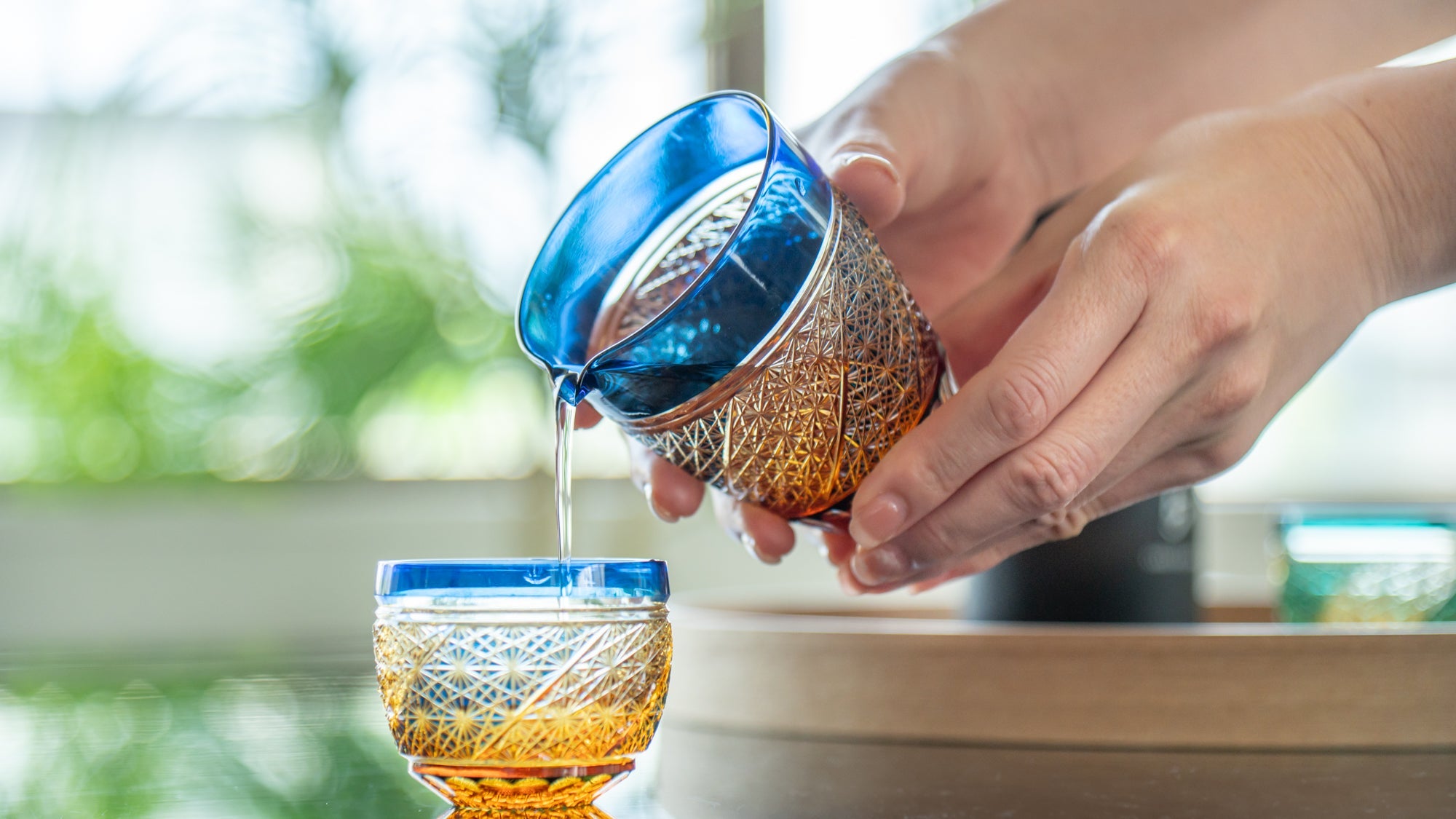
Grès
Dans notre collection d'articles de table, nous avons sélectionné des produits en grès qui mettent pleinement en valeur la chaleur du matériau. Nous espérons que vous accueillerez chez vous ces pièces appréciées de tous âges et de toutes origines.
